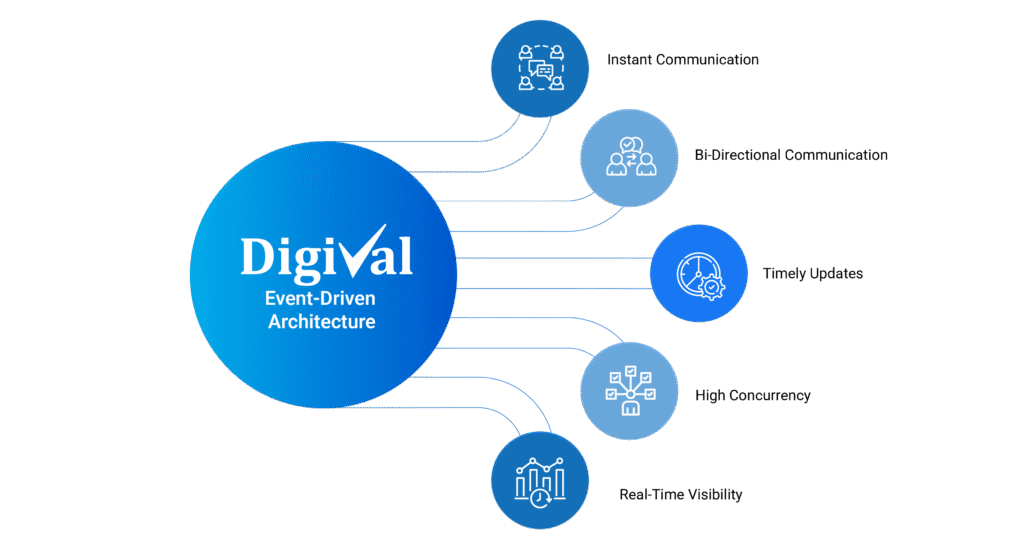In today’s rapidly evolving educational landscape, the seamless integration of institutional systems is paramount. DigiVal offers a robust and adaptable three-layered integration framework meticulously designed to cater to the diverse needs of modern universities, autonomous colleges, national institutions, and distributed learning networks. This framework provides a pathway for institutions to connect their Learning Management Systems (LMS) and Student InformationSystems (SIS) effectively. Each integration model is tailored to align with the institution’s unique technical environment, ensuring robust governance, stringent security, and long-term scalability.
This article provides a comprehensive overview of DigiVal’s integration approach, highlighting its intended audience and showcasing practical use cases across a variety of academic settings.
This framework is particularly relevant to the following stakeholders:
DigiVal’s event-driven architecture facilitates instant, bi-directional communication between university LMS and Student Administration Systems. This integration model is ideal for institutions that prioritize timely updates, high concurrency, and real-time visibility across academic and administrative workflows.

The integration layer acts as the bridge between these disparate systems and the DigiVal Cloud Core. It offers three distinct modes to accommodate different data types, integration requirements, and system capabilities:
For institutions with well-established API-enabled systems, DigiVal’s API-based integration model offers a predictable and well-orchestrated synchronization cycle. This approach aligns data exchange with academic processes without requiring continuous streaming, providing a clean and reliable integration path while respecting operational cadence.

To support institutions operating on legacy systems or systems without integration endpoints, DigiVal offers thin-layer database connectors. This model allows secure, read-only access to the institution’s database, enabling DigiVal to extract, process, and synchronize data seamlessly.

Integration is not just a technical task; it requires strong governance and data protection. DigiVal follows a collaborative, consulting-first approach, where both teams jointly define data boundaries, access rules, and compliance expectations.
Many institutions must adhere to national or regional educational data regulations. DigiVal supports deployment modes that ensure data remains within allowed geographic or network boundaries.
1. On-Campus Only Integration:
Connector runs within the institution’s internal servers, ensuring data isolation.
Data never leaves the campus network, adhering to strict security policies.
2. Region-Specific Data Sync:
Only data from certain regions/campuses is synchronized, complying with regional regulations.
Ideal for multi-country or multi-state universities, addressing diverse data requirements.
3. No Out-of-Country Transfer:
Fully compliant with national data protection laws, ensuring legal compliance.
 +971 55 654 0099
+971 55 654 0099 +91 89 258 23447
+91 89 258 23447©2025. All rights reserved by DigiAssess. Designed and developed by Pixtornet



